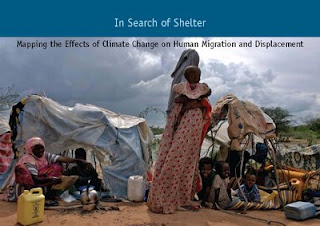-
A Forecast of Push and Pull: Climate Change and Global Migration
›March 10, 2010 // By Julien Katchinoff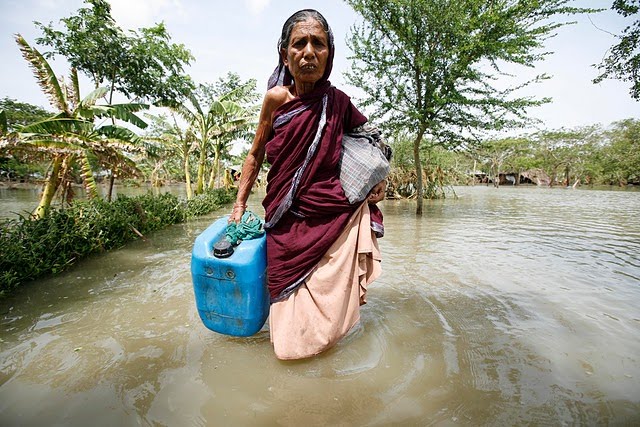
“As we …talk about the interconnections between climate change and migration we need to look at the interconnections in a way that understands what’s positive about the processes of migration and what’s problematic,” said Susan Martin, Herzberg Professor of International Migration at Georgetown University, during a recent event on climate and migration at the Center for American Progress.
Susan Martin joined Cynthia Brady, senior conflict advisor for the Office of Conflict Management and Mitigation at USAID and David Waskow, director of the Climate Change Program at Oxfam America, to identify the catalysts for future population flows, offer pragmatic policy solutions, and discuss work to be done on the ground.
While reminding the audience that climate-induced migration will tend to follow already existing patterns, Susan Martin broadly outlined four major intersections between migration and climate change impacts:
“Slow” Migration Pressures:- Drought or desertification resulting in a loss or depreciation of livelihoods.
Result: Push working family members to migrate to domestic or international urban centers. - Rising sea levels damaging fishing and agriculture opportunities.
Result: Migration to inland regions to reduce future risk.
“Rapid” Migration Pressures:- Intensification of natural disasters and damage to infrastructure.
Result: The coping costs increase to the point where they push large numbers of people to leave their homes. Most individuals migrate internally. Of the four intersections, this is currently the most common. - Threats to the availability of food, water, and other natural resources.
Result: Low or high intensity conflict, leading to migrations. The short timeframes and potentially large numbers of migrants involved make this driver the most problematic. Differing degrees of internal political stability are factors that can interfere for better or worse.
Yet these relationships are not without controversy. “Environmentalists have tended to see the issue of migration as a way of getting attention to mitigation and have often talked about migration in very alarmist terms,” Martin said. “Migration experts, on the other hand, have been very skeptical about the interconnection.” Instead, they have argued that other push and pull factors outside of climate are much more significant to the migration calculation.

Operating from the perspective that migration itself is an adaptation failure, David Waskow outlined several strategies that Oxfam deploys to help communities copewith uncertain futures:
- Building climate resilience and developing adaptation strategies: Proactive approaches are essential, as agencies and communities can address future threats with disaster planning and creating early-warning systems.
- Managing risk: The establishment of micro-insurance projects can cushion vulnerable populations against unexpected economic shocks.
- Resettling communities: The movement of rural populations to urban areas could result in tensions over land use and strains on urban governance and carrying capacities. As a result, this approach is left as a last recourse.
Brady, though in agreement with Waskow concerning climate change’s threat to livelihoods and its role as a catalyst for conflict, suggested that there may be positive opportunities for managing climate risks. “The environment can and does provide an essential and effective platform for dialogue, communication, and confidence-building around shared interests,” Brady said. “It may be that certain conflicts actually lend themselves to the use of climate-related collaboration as a mechanism to resolve conflict or reduce tension between parties,” she said.
Climate-related projects at the community-level, from adaptive early-warning systems to mitigating carbon storage schemes, hold the possibility to bring groups together in cooperative projects, build confidence, and defuse existing tensions. Transparent and participatory management of new investments may also increase trust in local and national governments with whom trust was previously lacking. While forestalling crises in the future, adaptation projects also hold the potential to unlock opportunities for peacebuilding and conflict resolution today.
Photo Credits: Photo 1 courtesy Oxfam America. Photo 2 courtesy Center for American Progress. - Drought or desertification resulting in a loss or depreciation of livelihoods.
-
VIDEO: David Jensen on UNEP and Natural Resource Management After Conflict
›November 5, 2009 // By Sajid Anwar“We don’t do the gloom-and-doom scenarios anymore,” says David Jensen of the UN Environment Programme’s Post-Conflict and Disaster Management Branch, in a video interview with ECSP Director Geoff Dabelko. “We focus on the opportunities provided by resource management. We focus much more on how they can support economic recovery, how they support livelihoods, how environment can be a platform for cooperation.”
When conducting its post-conflict environmental assessments, UNEP looks for “entry points using specific hotspots or specific sites that people can really understand and see the linkage between environment and conflict, or between their livelihoods and natural resources,” says Jensen. “We always try to be in the field and demonstrate the value of better resource management” for post-conflict recovery. -
Trees: The Natural Answer to Climate Change, Food Insecurity, and Global Poverty
›September 30, 2009 // By Brian Klein Some advocates of geoengineering have touted fake, plastic “trees” as a promising technology for absorbing carbon. But other experts are promoting a solution that also filters water, encourages rainfall, prevents erosion and desertification, offers economic opportunities, and provides a vital source of food for a growing global population: real trees.
Some advocates of geoengineering have touted fake, plastic “trees” as a promising technology for absorbing carbon. But other experts are promoting a solution that also filters water, encourages rainfall, prevents erosion and desertification, offers economic opportunities, and provides a vital source of food for a growing global population: real trees. -
Wind Farms’ Dirty Laundry Aired in Mexico and the United States
›September 18, 2009 // By Kayly OberMany see wind as a great source of green energy, but some local communities around the world are seeing red. Specific cases in the United States and Mexico—two countries that are now investing heavily in wind energy—highlight the potential for community opposition to wind farms in the rural areas where they are being built.
Mexico was recently dubbed the “Saudi Arabia of alternative energy” by USA Today due to the government and foreign investors’ massive wind energy initiatives. The Isthmus of Tehuantepec, a narrow point between two mountain ranges where wind from the Gulf of Mexico is funneled out to the Pacific Ocean, is known as the one of the windiest places on earth.
Mexican President (and former energy minister) Felipe Calderon has called for the isthmus to produce 2,500 megawatts of electricity from wind power within three years. The project is intended to decrease Mexico’s dependency on its falling oil supplies and stimulate the economy in Oaxaca, one of the poorest states in Mexico.
However, the local community has greeted the initiative with unexpectedly fierce opposition. Residents are angry that the electricity will likely be sold to distant cement plants and big-box stores like Wal-Mart.
In addition, foreign companies have offered local farmers little compensation—about $46 per acre each year—for the land. Residents say they need more, especially since wind farms threaten their traditional livelihoods. Construction stirred up huge amounts of dust and blocked irrigation lines, forcing many farmers to cut crops and herds by more than half.
A group of farmers recently sued three Spanish companies, claiming that the investors aimed to trick poorly educated farmers, many of whom did not speak Spanish, with misleading contracts. Demonstrators in La Venta have disrupted the construction of the Eurus wind farm six times. And territorial disputes have reignited old feuds along racial and political lines in San Mateo del Mar.
Wind farms in the United States are also generating opposition, although of a milder variety. In Flint Hills, Kansas, 100 wind turbines now tower over 20 miles of roads. While most environmentalists cheer such a move, the positive energy prospects on the plains may also bring some negative consequences, such as fragmenting the already fragile prairie ecosystem.
The issue is even more contentious in Cape Cod, where developers are set to construct 170 wind turbines off the coast. Opponents argue that the Cape Wind project will obstruct ocean views, decrease tourism, disrupt traditional fishing trawlers, and block a major bird migration route. In 2008, when the Interior Department issued a favorable report on the project, the late Sen. Edward Kennedy famously announced that its decision “virtually assured years of continued public conflict and contentious litigation.” Local opposition groups, such as the Alliance to Protect Nantucket Sound, have said they are prepared to go to court if the project proceeds.
With the renewable energy footprint of the U.S. set to reach nearly 80,000 square miles of land by 2030, tensions over land-use issues look likely to rise.
These cautionary tales should not deter us from pursuing wind as a viable alternative energy source. Certainly, given the imperative to act against catastrophic climate change, wind should be part of the mix. However, planners and policymakers must consider the likely impacts on the local community; work with affected communities during site selection and construction; and share the benefits of the new projects in order to avoid environmental degradation and social unrest.
Photo: A wind farm in Mexico. Courtesy Flickr user Cedric’s Pics. -
Going Gaga Over Grain: Pakistan and the International Farms Race
›September 17, 2009 // By Wilson Center Staff Written by Michael Kugelman and originally published in Dawn.
Written by Michael Kugelman and originally published in Dawn.
Last May, while Pakistan’s military was waging its offensive in Swat, Islamabad officials were simultaneously launching another offensive in the Gulf: a charm offensive to secure investment in Pakistani farmland.
Appearing at “farmland road shows” across the region, the investment ministry representatives depicted Pakistan’s soil as the perfect solution to the Gulf nations’ food insecurity.
Such efforts have paid off for Islamabad (and according to media reports, more shows have been staged in recent days). Pakistan’s farmland is an increasingly popular target for wealthy, food-importing nations who, because of the volatility of world food markets, are taking food security matters into their own hands. These states (and also private investors) aim to buy or lease farmland overseas, grow their own crops and export them back home.
Given their lack of transparency, the details surrounding these investments are sketchy and the facts elusive. In Pakistan, uncertainty reigns over the exact amount of land made available to investors, the quantum of land sold or leased so far, and who is in fact doing the investing.
Still, even without these details, there is strong evidence to suggest that the race for Pakistan’s farmland — if not halted prematurely by farmers’ opposition or investor change-of-hearts — could trigger droves of land deals, acute resource shortages and even political strife.
Islamabad has established an extraordinarily welcoming investment environment that financiers will find hard to resist. The government’s Corporate Agriculture Farming (CAF) policy — spelled out on the Board of Investment’s website — effectively legalizes foreign land acquisitions. It permits state land to be purchased outright or leased for 50 years, and allows investors to determine the size of their acquisitions (with no upper ceiling). These features apply to a broad range of agriculture from crops, fruits and vegetables to forestry and livestock farming.
Land investors flock to countries with strong legal protections. Cambodia’s government has reportedly established a national land concession authorizing public land to be allocated to foreigners — and the country is now experiencing what the BBC describes as an “epidemic of land-grabbing.” Conversely, in India, foreign companies are banned from owning farmland — and considerably fewer investors have come calling.
Pakistan, like Cambodia, provides the legal cover farmland investors look for. However, the CAF goes beyond legal protections. It also offers generous financial incentives such as 100 per cent foreign equity; exemptions on land transfer duties; and customs-duty-free, sales-tax-free agricultural machinery imports.
Legal protection and financial incentives — what more could a foreign land investor in Pakistan want? Security, of course, and Islamabad purports to have this covered as well, through the formation of a 100,000-strong security unit. Pakistan’s government is so serious about concluding land deals that it has offered to deploy a force almost a fifth the size of the army to protect investors’ new holdings.
A rash of foreign land acquisitions in Pakistan would deepen the country’s resource crisis. Pakistan already suffers widespread water shortages, and could be water-scarce by 2020. However, supplies could dry up much sooner if enormous quantities of water are siphoned off to support large-scale, water-intensive agricultural production schemes.
To understand the scale of Pakistan’s water shortages, take a look at Aquastat, the FAO’s water statistics database. Of all the nations most often associated with relinquishing farmland, only one — Kenya — has less water availability per capita than Pakistan’s 1400 cubic meters. In fact, of the nearly 200 countries listed in the database, only 35 have less water than Pakistan — many of them the parched countries of the Gulf that are seeking the water-laden farmland they lack at home.
Indeed, quests for overseas farmland are water hunts as much as they are land hunts. Yet investors are seemingly so seduced by Islamabad’s legal and financial inducements that they disregard the fact that Pakistan’s water supply can barely sustain its own farming, much less that of immense foreign agribusiness projects.
Pakistan’s water and energy shortages could also limit the possible benefits accruing from the deals, including better technology, more employment and higher crop yields. With limited energy to operate upgraded farm machinery, and limited water to irrigate cropland, farming job prospects could suffer and talk of increased yields could become irrelevant.
Land deals could mean not just compromised small-holder livelihoods but also widespread displacement. Not surprisingly, critics argue that big land acquisitions could spark violent responses and mass political unrest. Such predictions may be premature — other than in Madagascar, opposition has been relatively localized — but they are not far-fetched in Pakistan. Here’s why. According to the World Food Program, 77 million Pakistanis are already food-insecure, and many of them live in the country’s most volatile areas. Foreign land holdings could cause a flare-up of this food vulnerability powder keg at the worst possible time. During the height of last year’s global food crisis, Pakistan imposed export bans to keep domestic food prices down.
Here’s why. According to the World Food Program, 77 million Pakistanis are already food-insecure, and many of them live in the country’s most volatile areas. Foreign land holdings could cause a flare-up of this food vulnerability powder keg at the worst possible time. During the height of last year’s global food crisis, Pakistan imposed export bans to keep domestic food prices down.
According to a report by the International Institute for Sustainable Development, the UAE — which hopes to grow rice and wheat in Pakistan — then requested blanket exemptions from these bans.
Islamabad eventually relaxed export restrictions on Basmati rice. So a politically explosive scenario — such as the UAE trucking rice out of a drought-stricken or war-ravaged Pakistan and exporting it back to the Gulf while hungry locals look on — is not at all unrealistic. Throw that investment-protecting security force into the mix, and things could get really ugly.
Furthermore, there are long-standing rifts between Pakistan’s rural poor and its wealthy, landholding elite. Scores of huge land acquisitions — particularly if they displace poor laborers — would exacerbate these class-based cleavages.
Ominously, the Taliban’s actions in Swat reveal a new ability to exploit class divisions by pitting landless farmers against their landlords. Militants may well use farmland acquisitions as a pretext for fomenting a fresh class revolt in Punjab, the fertile, populous province coveted by the Taliban and reportedly ground zero for the farms race in Pakistan. Such a thought is enough to make one wonder if those farmland road shows are really worth the effort.
Michael Kugelman is program associate with the Asia Program at the Woodrow Wilson International Center for Scholars.
Bottom photo: CARE food aid in Pakistan. Courtesy flickr user Feinstein International Center.
Top photo: Gilgit, Pakistan. Courtesy flickr user michaelnewport. -
VIDEO: Jon Barnett on Remembering REDD Realities
›June 26, 2009 // By Wilson Center StaffIn the run-up to December’s Conference of the Parties in Copenhagen, the idea of REDD, Reduced Emissions from Deforestation and Degradation, is gaining greater currency as a way to bring forests into climate mitigation efforts. Australian geographer Jon Barnett of the University of Melbourne finds the principle of compensating states or communities for reducing deforestation sound. Yet he cautions that the devil is in the details when it comes to implementation. Barnett stresses that deforestation’s diverse causes is an initial challenge in designing effective responses. And to whom should payments be made? Should they go to national governments that may or may not share those resources with communities affected by the restrictions on forest use?
In this interview conducted at the Woodrow Wilson Center, Barnett addresses these questions and highlights a number of areas where translating REDD from principle to practice remains challenging at best and counter-productive at worst: governance and corruption; social justice; monitoring and verification; and potential carbon leakage between participating and non-participating states. -
Climate and Migration: Threat or Opportunity?
›June 26, 2009 // By Lauren Herzer Risi“The breakdown of ecosystem-dependent livelihoods is likely to remain the premier driver of long-term migration during the next two to three decades,” says In Search of Shelter: Mapping the Effects of Climate Change on Human Migration and Displacement, a report launched at the recent international climate negotiations in Bonn.
According to the report, climate change will threaten livelihoods (and could consequently drive migration) through its impact on agriculture, glacial melt, sea-level rise, and the severity and frequency of natural disasters. While the report recognizes that migration is a complex issue involving a “combination of environmental, economic, social and/or political factors,” it stresses the impact of environmental change on “livelihoods which are dependent on ecosystem services, such as agriculture, herding, and fishing.”
Key to the report’s findings is the disproportionate effect that climate change will continue to have on developing countries, which are ill-equipped to adapt to climate change, and where many people’s livelihoods depend directly on ecosystem services. The report calls for the reduction of carbon emissions to mitigate climate change; the promotion of technologies that will enable adaptation; and the active participation of women and other marginalized groups in adaptation planning.
In a recent invitation-only meeting hosted by the Wilson Center’s Environmental Change and Security Program, Jon Barnett of the University of Melbourne suggested that migration that is partially due to climate might be an opportunity, as “you could use migration to facilitate adaptation.” In Search of Shelter also recognizes this potential opportunity, and suggests that development strategies be formulated accordingly. Better infrastructure, health care, and education in likely receiving cities—many of which are in the developing world and are already overwhelmed by burgeoning slum populations—would significantly reduce the pressure of migration on both migrants and receiving populations.
In Search of Shelter is a unique contribution to the field, examining climate change’s impact on migration in a careful, evidence-based manner. Yet it strikes a common chord with general reports on development by stressing the important role that access to health care, education, and infrastructure play in supporting healthy, secure populations. It may be up for debate how large of a role climate change will play in prompting migration, but it is clear that we need to integrate this issue into broader development, health, and governance strategies.
Image: Cover of In search of shelter: mapping the effects of climate change on human migration and displacement. © 2008 by CARE International. Used by permission. -
VIDEO: Jon Barnett on Climate Change, Small Island States, and Migration
›June 23, 2009 // By Wilson Center StaffNo one is currently emigrating from Pacific small island states principally due to climate change, according to Australian geographer Jon Barnett of the University of Melbourne. In this short interview conducted at the Woodrow Wilson Center, Barnett situates climate change’s potential future impacts within the broader social, political, and economic challenges for residents of small island states, reminding us that there is great physical and political diversity among these islands.
Stressing the mix of pushes and pulls that motivate people to move, Barnett suggests we examine existing patterns of migration to better understand how they will develop in the future. He emphasizes that climate change is most likely to push islanders to move due to declining food production and drinking water availability, rather than sea-level rise—despite the iconic image of lapping waves submerging low-lying countries. These sober reminders on the complexity of climate-migration links are worth keeping in mind when evaluating the plethora of new reports on the topic.
Showing posts from category livelihoods.


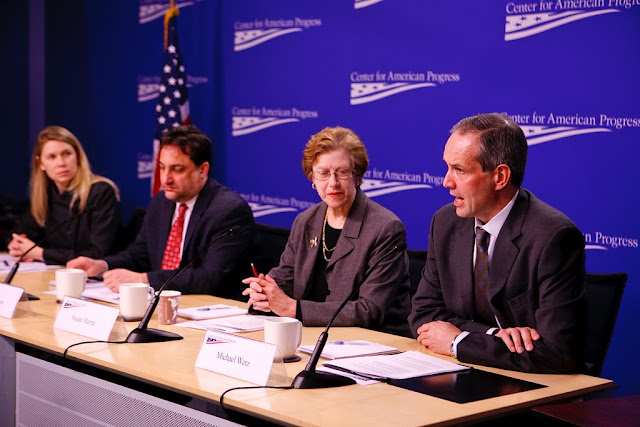
 Some advocates of
Some advocates of 
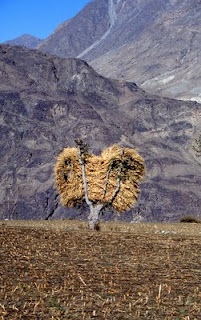 Written by Michael Kugelman and originally published in
Written by Michael Kugelman and originally published in 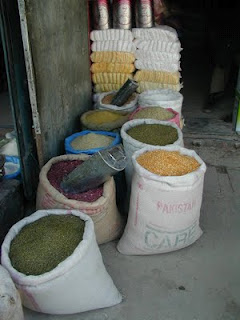 Here’s why. According to the World Food Program,
Here’s why. According to the World Food Program, 